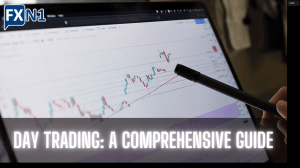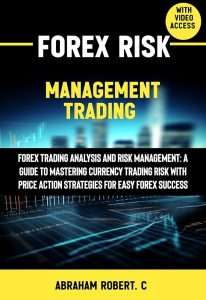A Comprehensive Guide to Forex Options Trading
Unlock the potential of forex options trading! Learn advanced strategies, master risk management, and navigate the complexities of the foreign exchange market. Become a savvy options trader today!
Forex options trading presents a unique opportunity for sophisticated investors to participate in the dynamic foreign exchange market. It offers a level of control and risk management not always available with traditional forex trading. Understanding the nuances of options contracts, however, is crucial for success. This comprehensive guide will delve into the intricacies of forex options, exploring strategies, risk management techniques, and the overall landscape of this complex yet rewarding market. We will examine various aspects to equip you with the knowledge necessary to make informed decisions.
Understanding Forex Options Contracts
At its core, a forex option is a contract that grants the buyer the right, but not the obligation, to buy or sell a specific currency pair at a predetermined price (the strike price) on or before a specific date (the expiration date). This differs significantly from traditional forex trading where you are obligated to buy or sell at the current market price. The seller of the option, the writer, is obligated to fulfill the contract if the buyer chooses to exercise their right.
There are two main types of forex options: calls and puts. A call option gives the buyer the right to buy the base currency at the strike price, while a put option gives the buyer the right to sell the base currency at the strike price. The profit or loss for both buyers and sellers depends on the movement of the exchange rate relative to the strike price at expiration.
Call Options Explained
Imagine you believe the EUR/USD exchange rate will rise. You could buy a call option, giving you the right to buy Euros at a specific price. If the rate rises above your strike price before expiration, you can exercise your option, buy Euros at the lower strike price, and sell them at the higher market price, realizing a profit. If the rate remains below the strike price, your option expires worthless, and you only lose the premium paid for the contract.
Put Options Explained
Conversely, if you anticipate a fall in the exchange rate, you might buy a put option. This grants you the right to sell the base currency at the strike price. If the exchange rate falls below your strike price, you can exercise your option, benefiting from the price difference. If the rate stays above the strike price, the option expires worthless, and your loss is limited to the premium.
Strategies in Forex Options Trading
Successful forex options trading often relies on employing specific strategies that align with market expectations and risk tolerance. These strategies can range from simple hedging techniques to more complex options spreads.
Hedging with Options
One common use of forex options is hedging. Imagine a company expecting to receive a large payment in Euros in the future. They could buy put options on EUR/USD to protect against a decline in the Euro’s value. This would limit their potential losses if the exchange rate moves unfavorably.
Straddles and Strangles
More advanced strategies involve straddles and strangles. A straddle involves simultaneously buying a call and a put option with the same strike price and expiration date. This strategy profits if the exchange rate moves significantly in either direction, but loses if it remains close to the strike price. A strangle is similar but uses different strike prices for the call and put options, making it less expensive to enter but requiring a larger price movement to be profitable.
Spreads: Combining Options for Defined Risk
Options spreads are combinations of multiple options contracts designed to manage risk and potentially increase profit potential. Various spreads exist, each with its own risk-reward profile. Understanding these spreads is crucial for developing a robust trading strategy. Careful consideration of the underlying assets and market conditions is imperative for effective utilization.
- Bull Call Spread: A bullish strategy involving buying a call option and simultaneously selling a higher-strike call option. Limits potential profits but reduces the initial cost.
- Bear Put Spread: A bearish strategy that involves buying a put option and simultaneously selling a lower-strike put option. Similar to the bull call spread in risk profile.
- Iron Condor: A neutral strategy involving buying and selling both calls and puts at different strike prices. This strategy profits when the price remains within a defined range.
Risk Management in Forex Options Trading
Forex options trading inherently involves risk, and effective risk management is paramount. Understanding potential losses and implementing strategies to mitigate them is essential for long-term success.
Defining Your Risk Tolerance
Before engaging in options trading, it’s crucial to define your risk tolerance. How much are you willing to lose on any given trade? This will guide your choice of strategies and position sizing. Never risk more capital than you can afford to lose. Thorough research and understanding of the market are crucial.
Position Sizing and Diversification
Proper position sizing is vital. Don’t put all your eggs in one basket. Diversify your portfolio across different currency pairs and strategies to reduce your overall risk. Avoid over-leveraging your account, as this can amplify both profits and losses.
Stop-Loss Orders and Protective Strategies
Utilize stop-loss orders to automatically limit potential losses on your trades. These orders will close your position if the market moves against you, preventing significant losses. Protective strategies, such as hedging, can further mitigate risk.
Factors Influencing Forex Options Prices
Several factors influence the price of forex options, making it essential to understand these dynamics for effective trading.
Spot Exchange Rate
The current market exchange rate between two currencies (the spot rate) is a fundamental driver of options prices. Options prices are directly related to the spot rate, with changes in the spot rate impacting option values.
Time to Expiration
The time remaining until the option expires significantly impacts its price. Options with longer expirations generally have higher prices due to the increased uncertainty and potential for price movement.
Volatility
Market volatility plays a critical role. Higher volatility generally leads to higher option prices because the potential for large price swings increases the value of the option’s right, but not obligation, to buy or sell.
Interest Rates
Interest rate differentials between two currencies can affect options prices. Higher interest rates in one currency relative to another can increase the value of options related to that currency.
Choosing a Broker and Platform
Selecting the right broker and trading platform is a critical decision for forex options traders. Factors to consider include the broker’s reputation, regulatory compliance, trading fees, platform features, and customer support.
- Regulation and Security: Choose a regulated broker to ensure the security of your funds and adherence to industry standards.
- Trading Fees and Commissions: Compare fees and commissions across different brokers to find the most cost-effective option.
- Platform User-Friendliness: Select a platform that is user-friendly, intuitive, and provides the necessary tools for analysis and order execution.
- Customer Support: Reliable and responsive customer support is crucial, especially when dealing with complex financial instruments.
Learning and Continuous Improvement
Forex options trading requires continuous learning and adaptation. The market is constantly evolving, and staying informed about new strategies, risk management techniques, and market trends is essential for success. Engage in continuous education to enhance your skillset and adapt to changing market dynamics.
Consider taking courses, attending webinars, reading books, and following reputable financial news sources. Practice with a demo account before risking real capital, and consistently review your trading performance to identify areas for improvement. Discipline, patience, and a commitment to continuous learning are key to long-term success in this challenging yet potentially rewarding field.
Forex options trading presents a powerful tool for sophisticated investors, but it is not without its complexities. By understanding the fundamentals of options contracts, employing effective strategies, and maintaining a strong focus on risk management, you can navigate this market and potentially unlock significant profit opportunities. Remember that consistent learning, disciplined trading, and a realistic assessment of your risk tolerance are paramount to achieving success in this dynamic and ever-evolving market. The potential rewards are substantial, but only through diligent preparation and careful execution can you hope to consistently profit. Ultimately, success in forex options trading is a testament to your commitment to mastering its intricacies and adapting to its challenges.







